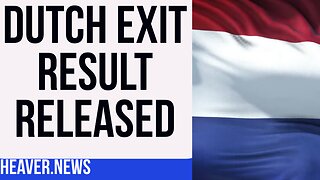LEIPZIG walk
LEIPZIG walk around/ Germany/ Deutschland
Leipzig is the largest city in the German federal state of Saxony, with a population of approximately 600,000 (Oct 2019). It is the economic centre of the region, known as Germany's "Boomtown" and a major cultural centre, offering interesting sights, shopping and lively nightlife. The Gewandhausorchester is the biggest and one of the most prominent classical orchestras in Germany, and Leipzig Zoological Garden is one of the most modern zoos in Europe. The Neuseenland, outside of Leipzig, is a huge lake district.
First documented in 1015, and endowed with city and market privileges in 1165, the city of Leipzig has fundamentally shaped the history of Saxony and of Germany. It was founded at the crossing of two ancient trade routes, Via Regia and Via Imperii. Leipzig has always been known as a place of commerce and still has large trade fairgrounds and exhibition halls known as the Leipzig Messe north of the city. Before it became common to dedicate a specific area to trade fairs, they took place in the city. Which is why many of the historical buildings were constructed by merchants, as were Leipzig's unique system of arcades and courtyards.
Other forms of exchange soon followed the trade of goods. The University of Leipzig (Latin: Alma mater lipsiensis) was founded in 1409, which makes it the second-oldest university in Germany. University facilities are scattered throughout the city, and you cannot miss the central campus at Augustusplatz. Leipzig acquired the nickname Klein Paris ("Little Paris") in the 18th century, when it became a centre of a classical literary movement largely lead by the German scholar and writer Johann Christoph Gottsched.
The city is also the home of the Nikolaikirche (Church of St. Nicholas) – the starting point of peaceful demonstrations against the East German regime which led to German Reunification. The collapse of the Socialist Unity Party of Germany (SED) regime hit Leipzig's economy very heavily (as had communism), but after being on the mend since 1990, it has emerged as one of the success stories of the "New German States".
Traces of Leipzig's history are everywhere: the ring of streets around the city centre marking the former course of the city wall, the city trade houses, abandoned and repurposed industrial buildings in Plagwitz, small town structures in the outskirts where surrounding towns were incorporated during phases of rapid growth, and the battlefields of the Napoleonic wars in the south and southeast of the city.
Today it competes with long time rival Dresden for the title of "biggest city in Saxony" . In the 2011 Census, Dresden overtook Leipzig, but according to 2016 estimates, Leipzig has an edge once more. Leipzig's trendy districts are rapidly gentryfying, especially the Südvorstadt neighborhood and it has thus gained the nickname "Hypezig" which is both used derisively and somewhat appreciatively.
Leipzig is a transportation hub in Saxony and offers fast connections by rail, road and air throughout Germany. Important east-west and north-south routes have crossed here for a long time and they still do today.
If you understand some German, get a copy of the monthly city magazine Kreuzer or use the event calendar on their website to get information on upcoming events. You can buy the Kreuzer for €2.50 in press shops and bookstores throughout the city.
Leipzig is surrounded by several lakes, resulting from former open-cast lignite mining and now developed into places for various outdoor activities. You can spend a day on the beach, ride a canoe, or go fishing or scuba diving 10 km from the city centre. Be warned that, due to their origins as open-cast mines, the lakes are very deep and have steep sides: don't enter the water unless you are a strong swimmer.
A local beer specialty is Leipziger Gose, a top-fermented brew, containing salt and coriander, with a characteristic, slightly sour flavour, that originated from Goslar but was immensely popular in Leipzig during past centuries. It has however become rather rare and is only served in a few specialised breweries and pubs nowadays, namely Gosenschenke Ohne Bedenken and Bayerischer Bahnhof (see listings below). Gose can be flavoured with green (woodruff) or red (raspberry) syrup, or mixed with liquor.
Today, most Leipzigers prefer more mainstream Pils beers and if you just order "a beer" you will most probably get a Pils by default. Ur-Krostitzer, for example, is brewed just a few kilometers north of Leipzig and was purportedly favoured by the Swedish king Gustavus Adolphus during his stay in the region. Leipzig's Sternburg Export is one of the cheapest among German beer brands (c. 50 cents a bottle in most supermarkets) and is preferred by the young and poor who want to get lit for little money, while only a few enthusiasts actually appreciate its taste.
A local liquor specialty is Leipziger Allasch, a kümmel (caraway-flavoured liquor), and a variety of liquors of Horn's distillery.
You can find a lot of pubs, bars, cafés and restaurants and also some smaller dance clubs along the multicultural Karl-Liebknecht-Straße ("Karli"). The street starts in the south of the inner city and leads you to Südvorstadt and Connewitz (student and alternative quarters). Many pubs, bars and cafés can also be found on 1 Barfußgässchen. edit, a narrow lane in the old town.
Leipzig has a long and lively coffee house tradition. Although many of the old cafés have disappeared, this tradition lives on. Besides Zum Arabischen Coffee Baum (listed under Museums above) a number of cafés give you a place to relax and have a cup of coffee during the day.
-
 LIVE
LIVE
Matt Kohrs
15 hours agoThe Meme Squeeze Saga, Live Options Trading & Breaking News || The MK Show
1,649 watching -
 1:39:13
1:39:13
The Podcast of the Lotus Eaters
5 hours agoThe Podcast of the Lotus Eaters #933
23.3K6 -
 2:02:37
2:02:37
AP4Liberty
3 hours agoDemocrats Abandoning Progressivism
2.89K2 -
 8:29
8:29
Front & Center with Jacquie Jordan
3 days agoBreaking The World's Speed Record and Mystery Patriot - Trump boat revealed
17.1K10 -
 7:36
7:36
scoutthedoggie
1 day agoBloody Airsoft War Scotland
28.4K3 -
 10:23
10:23
Freakin' Reviews
1 day agoArctic Air Ice Jet vs Pure Chill: Ultimate Cooling Showdown!
28.2K5 -
 11:23
11:23
ryanhoguepassiveincome
17 hours agoTOP 5 NICHES 🔥 Print on Demand Niche Research # 211 — (6/9/2024)
33.6K3 -
 23:57
23:57
Cody and Kellie
16 hours agoWe Destroyed Our Home, Can We Repair It?
32.2K10 -
 1:55
1:55
Michael Heaver
23 hours agoDutch Exit Result SHAKES EU
25.5K13 -
 10:47
10:47
Film Threat
16 hours agoTHE WATCHERS | Film Threat Reviews
27.2K3